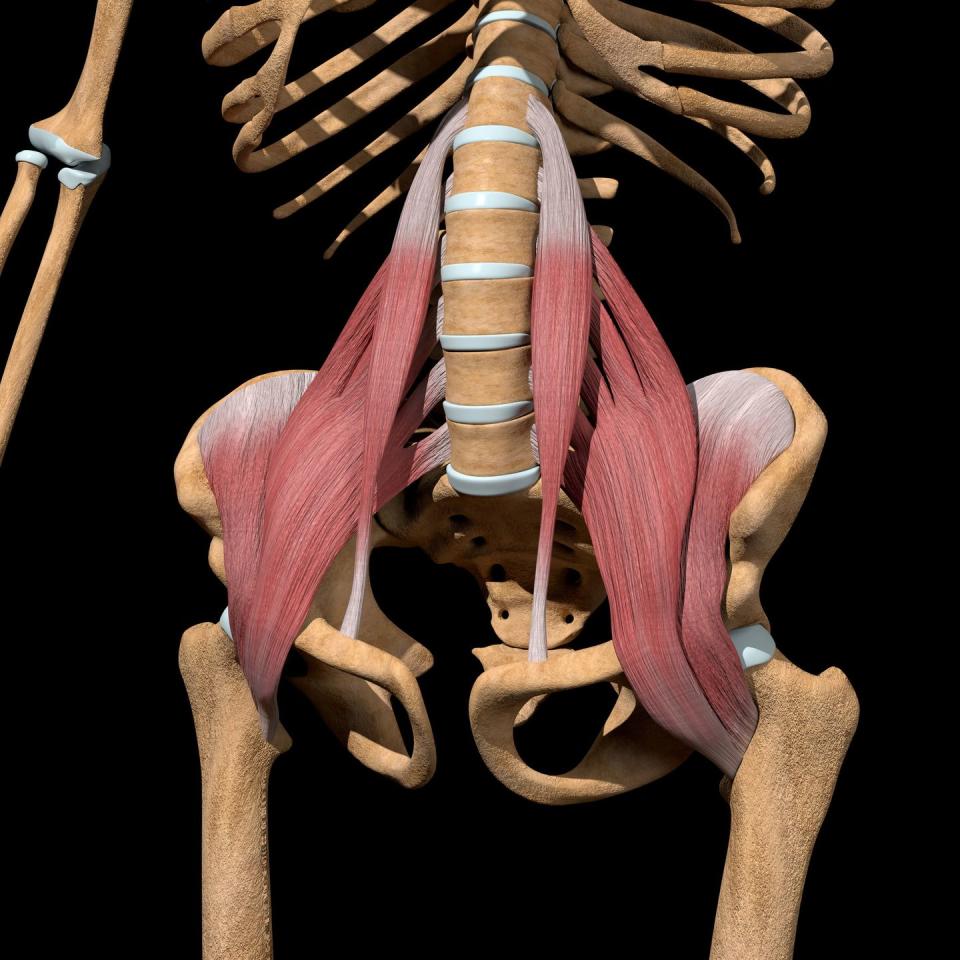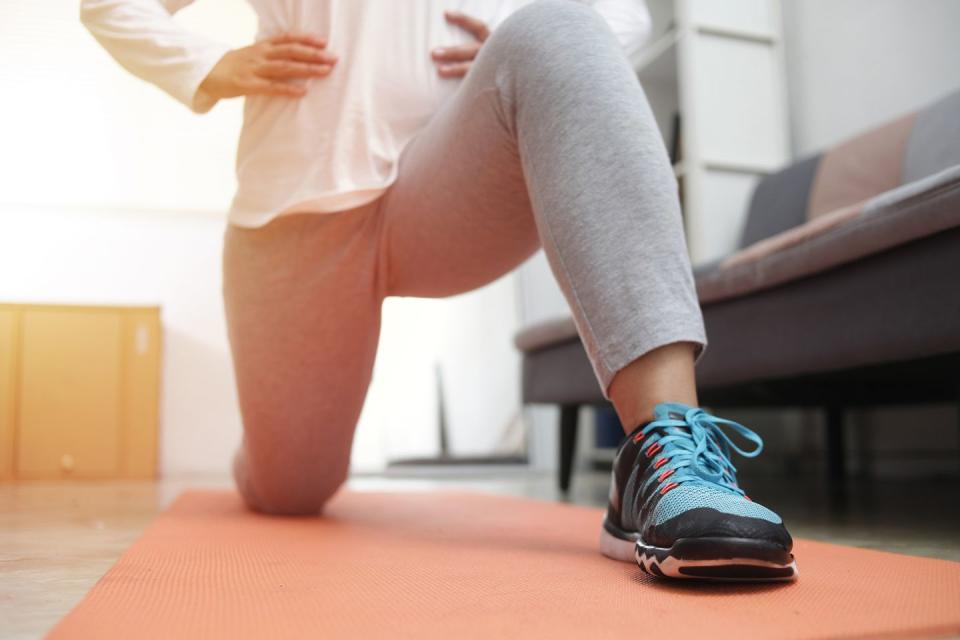Pain in both hips? You may have strained your hip flexors

The iliopsoas (pronounced ILL-ee-o-so-AS) is the combination of the psoas and iliacus muscles (the hip flexors). They are seriously underrated muscles. They don’t get nearly the press that hamstrings, glutes and quads do, but they’re equally as – if not more – important when it comes to everyday movement, as well as explosive athletic movement.
Why? First, consider the sheer size of the iliopsoas. They attach to the vertebrae in your lower back, one on either side, and run down through the pelvis to attach on the inner side of the femur. A well-developed iliopsoas can be several inches thick. These are big muscles.
Their role is twofold. First, they help support the spine. They help you bend forward at the waist (which is why a tight iliopsoas can cause lower-back pain). And second, they’re your hip flexors, meaning that they help you draw your knee up to your chest. An injured iliopsoas is very bad news for an athlete...
What causes a hip flexor strain?

Injuries usually happen due to one of two issues: an awkward or unexpected movement straining the muscle, or overuse caused by lots and lots of hip flexion or external rotation of the thigh, which can also lead to tendinitis. Name your sport and you’re vulnerable: running (especially uphill), football, gymnastics, dance, rowing and even resistance training.
To make matters worse, a tight iliopsoas can cause other injuries through the kinetic chain. Tight iliopsoas muscles can tilt the pelvis, which can bring on lower-back issues as well as affect your running stride, which can, in turn, lead to knee problems such as patellar tendinitis.
Another iliopsoas issue is the so-called snapping hip syndrome, where a clicking or snapping sensation or sound occurs with hip flexion. If you have pain along with the snap, that could signal iliopsoas tendinitis or bursitis.
So you see, all of these muscles are interrelated and depend on one another for optimal performance. Strengthen one area and you will help all the other areas around it.
What the symptoms of hip flexor strain?
Pain in the front of the pelvis on either side, especially when the knees are raised towards the chest (as when you pull your knee to your chest to tie your shoe, for example). Lower-back pain and patellar knee pain can also be symptomatic of iliopsoas problems.
How should you treat a hip flexor strain?
Employ dynamic rest
Avoid movement that stresses the iliopsoas (running, bending at the waist, any activity that forces you to raise your knee). Use intense upper-body workouts to maintain fitness.
Ice it
Apply ice for 15 minutes 4 to 6 times a day for the first 2 days.
Try an NSAID
An anti-inflammatory like ibuprofen or aspirin can help with swelling and inflammation.
Stretch it

As pain allows, gradually and gently begin basic hip flexor stretching: kneel with one knee on the floor and the other leg out in front with your knee bent (sort of like a lunge, but with the back knee on the floor). Keeping your back straight, push your hips forward until you feel the stretch in the hip and thigh. Hold for 20 to 30 seconds. Do 3 reps several times a day. Don’t hold your breath during the stretch.
You can also add a rectus femoris stretch to this move. Begin the hip flexor stretch as described, but instead of leaving the lower part of the rear leg on the floor, reach back and pull the foot up toward your butt. Again, push your hips forward and hold for 20 to 30 seconds for each of 3 reps performed several times a day.
Prevent it
Pay attention to your core, quads, glutes, and hamstrings
Your iliopsoas work closely with that entire system of muscles – they form a big part of the kinetic chain – and weakness or instability in one or more of those areas can affect all the others. The stretches and exercises here build powerful glutes, hamstrings, quads, and hip flexors and can be added to any workout.
And don’t forget these other hip-flexor-friendly activities: Sprints/intervals (get those knees up!), sprints with directional change, such as figures-of-eight, shuttle runs or cone drills, hill sprints, stairs, cycling, rowing.
Swiss-ball pike
Assume a press-up position with your arms completely straight. Position your hands slightly wider than and in line with your shoulders. Rest your shins on a Swiss ball. Your body should form a straight line from your head to your ankles. Without bending your knees, roll the Swiss ball toward your body by raising your hips as high as you can. Pause, then return the ball to the start by reversing the motion.
Bodyweight squat jumps
Place your fingers on the back of your head and pull your elbows back so that they’re in line with your body. Perform a body weight squat until your thighs are parallel to the floor, then explosively jump as high as you can (imagine you’re pushing the floor away from you as you leap). When you land, immediately squat and jump again. Hold dumbbells at your side to make it more challenging.
Reverse lunge with reach back
Stand tall with your arms hanging at your side. Brace your core and hold it. Lunge back with your right leg, lowering your body until your left knee is bent at 90 degrees. As you lunge, reach back over your shoulders and to the left. Reverse the movement back to the starting position. Complete the prescribed number of reps with your right leg, then step back with your left leg and reach over your right shoulder for the same number of reps. Keep your torso upright for the entire movement.
Plank
Get into a press-up position, but bend your elbows and rest your weight on your forearms. Your body should form a straight line from your shoulders to your ankles. Brace your core and hold. Let your fitness level determine how long you hold the plank, but 30 seconds to a minute is good, aim for 3 to 6 minutes total plank time with rest as necessary.
This is extracted from The Athlete’s Book of Home Remedies by Dr Jordan Metzl.
You Might Also Like


